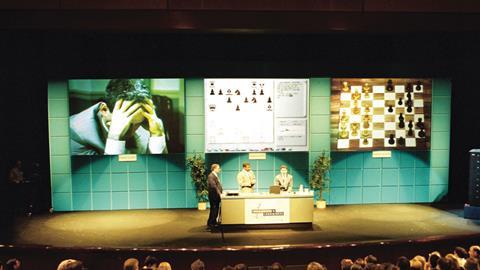Innovation does not have to mean reinventing the wheel.
Innovation in legal IT is commonly linked to artificial intelligence (AI). But sometimes it is about approaching a pain-point from a new perspective, or using existing resources to deliver something new.
Legal tech start-ups are attracting serious investment and this is leading law firms and legal IT vendors to think about innovation. One example is Andreessen Horowitz’s $8m investment in Everlaw, a cloud-based start-up that helps lawyers manage trial documentation. In March, law tech start-up community Legal Geek will host Europe’s first Law Tech Hackathon at Google’s Campus London, where teams will develop solutions to support Hackney Community Law Centre. However, as hackathon organiser Jimmy Vestbirk observed, there are 400 legal tech start-ups in the world, but only 40 in the UK.
Mark Brill, mobile strategist and senior lecturer in future media reflected this in his keynote speech at Ark Group’s legal IT event by paraphrasing science fiction writer William Gibson: ‘There is a sense of legal IT being behind the curve, but some of it is very good. It’s just not evenly distributed.’
Innovation in legal IT tends to be associated with disruptive technology. On 1 February, a few days after Google DeepMind (a UK start-up) beat the European champion of the board game Go, the Thought Leader Bureau’s Lecture for Laurie, an annual lecture in memory of author and business consultant Laurie Young, focused on AI and the law. At one session, futurologists Richard and Daniel Susskind interviewed James Luke, executive on the IBM Watson team, who explained the rationale behind Deep Blue’s victory over world chess champion Garry Kasparov (pictured).
They asked whether the fact that AI can play games made it cleverer than humans, or able to replace humans? Would it eventually replace lawyers? Luke did not think so, because AI is about processing information, including calculating the multiple probabilities required to win at Go (which has 200 possible moves, compared with 20 in chess), while the core elements of legal practice are based on reasoning rather than probability.
IBM Watson is the platform for a lot of innovative legal IT involving cognitive systems. I asked Luke where he saw the future of AI in the legal sector. ‘Cognitive computing will empower professionals by taking out the “grunt work” so that they can concentrate on high-value work,’ he replied. ‘Although people are afraid that it will take people’s jobs, technology generally opens up new business areas and creates jobs. But it will continue to change how people work.’
Digital legal research assistant Ross is a good example. Previously the only way to access legal knowledge – legislation, precedents, legal knowhow – was to consult an expert. But as we move into the cognitive era, this type of knowledge can be systematised. It means that professionals can reduce the time they spend on research because all the knowledge they require is at their fingertips.
So far, legal AI case studies reflect this view, automating routine tasks to free up lawyers for more interesting/valuable work. And this has gone mainstream. Andy Wishart of ContractExpress, which was acquired by Thomson Reuters last year, explained that the AI element of the software can differentiate between standard contracts and contracts which are likely to be subjected to more complex negotiation. It can also analyse historical data to determine which contracts are likely to involve an increased level of risk and therefore require human input.
IBM Watson’s specialist systems combine industry knowledge with machine learning. ‘Machine learning is a critical element of Watson as it allows the end user to train and configure the system,’ Luke explains. ‘Natural language is a major challenge because it is constantly changing and a machine-learning system will evolve as it learns from real-world examples. IBM customises natural language processing to specific industries and sectors, so that the machine understands the context and significance of legal terminology, for example.’
A seat on the board
Innovation is getting a seat on the board of many leading law firms.
A noticeable proportion of the law firm contingent attending the Lecture for Laurie had a job title that included innovation – head of innovation, strategic innovation manager and so on. This indicates that innovation is going the way of big data in law. A couple of years ago everyone was talking about it. Then firms started investing in roles – business analysts and CDOs (chief data officers or chief digital officers) who made things happen. Now most mainstream legal IT software includes the capability to capture and analyse management information – and deliver insights back to the firm and its clients – and this has become standard client service.
Firms are focusing on innovation because legal IT is getting a lot of attention at the moment and they are looking for opportunities to use technology as a differentiator.
Examples that have hit the legal press in recent weeks include Australian firm Gilbert + Tobin’s legal technology hackathon, which brought together lawyers, technologists and clients to brainstorm problems and share ideas and inspiration.
In the Netherlands, NautaDutilh has made innovation central to its brand with the strapline ‘Challenge the obvious’. Innovation manager Nicky Leijtens, who joined the firm in 2015, previously worked with groundbreaking online dispute resolution platform Rechtwijzer, which applies a system similar to eBay’s dispute resolution service to family law. Leijtens’ presentation at Ark’s Legal KM Europe event emphasised that law firms needed to embrace change and make room for creativity and innovation.
NautaDutilh has created a physical environment – and a culture that fosters innovation, she said, from the design of the office to making time for brainstorming and collaboration, and rewarding ideas.
This philosophy is based on Design Thinking, which Tim Brown of IDEO defines as ‘a human-centred approach to innovation that draws from the designer’s toolkit to integrate the needs of people, the possibilities of technology, and the requirements for business success’.
Innovation should be based on free thinking, but it also requires purpose. Leijtens and her team look to enhance customer service by encouraging ideas and developing them into services that customers did not know they needed but buy into straight away because, like Uber, they offer control, transparency, ease of use, consistency and a degree of personalisation. She believes that law firms often focus on getting things right rather than getting things ‘out there’. They can learn from start-ups which tend to embrace rapid prototyping, speed to market and flexibility – they are willing and able to make adjustments in response to user feedback.
Finding a new perspective
Innovation does not necessarily mean reinventing the wheel. As Brill observed, it can be about pushing from the other side – working back from the solution rather than looking at the problem and trying to find ways to solve it. And this does not necessarily mean developing or investing in more technology, but leveraging and repurposing existing capability.
Law firms’ appetite for innovation is driving investment in legal IT start-ups, but it is also accelerating consolidation among mainstream vendors who are integrating the latest developments into existing offerings. For example, HighQ has announced that it is integrating RAVN’s AI-powered cognitive search into its extranet and collaboration software.
Previously, legal services firms have followed the example of the mainstream technology giants Google, Apple and Microsoft by investing in advanced technology like AI to boost their own services and help them compete for market position. This move highlights the interesting potential for intelligent client-facing technology.
While disruptive technology is genuinely transformational, mainstream technology can also support innovation and business agility.
Last month, Intapp, whose time-recording software dominates the UK top 200 firms, bought its competitor Rekoop, making Intapp the most popular time-recording software in the legal sector.
Most law firms have time-recording software, whether it is part of their practice management system or bought as a separate product. Osborne Clarke’s Total Time Recording programme uses Intapp Time to understand how people are investing their time. IT director Nathan Hayes explains that this involves capturing time spent on all activities and presenting the information back to people in a useful way.
‘We have time codes for different activities, so that we can see how much time people are spending on business development, for example. And we have a traffic light system that shows people how they are doing against their billable targets. We are also combining time capture and analysis tools with pricing tools to identify the resources we allocate to fixed-fee work, as this factors into our profitability. We can look at the resources we allocate to different matter types and different phases of a deal, for example, so that we can anticipate requirements for future matters.’
The idea is to understand how lawyers work – a kind of digital ethnographic research – and find efficiencies. It is also about forecasting how much time a piece of work is likely to take and relate this to the anticipated fee in order to evaluate whether an instruction will produce an acceptable profit margin.
Although it does not look like time-based billing is on its way out any time soon, lawyers’ hourly rates hit the headlines again last week. A report by Jim Diamond for the Centre for Policy Studies looked at law firm billing and suggested that firms should consider alternatives to the billable hour, which is becoming less acceptable to clients and also the judiciary. Only time will tell.
On a different note
I interviewed artist Neil Harbisson, the world’s first cyborg, whose presentation at Ark’s legal IT event covered the legal implications of connected, wearable and implantable technology. Harbisson, who is completely colour-blind, has an antenna permanently implanted into his skull to enable him to define colours by the notes he hears when his antenna captures their sound waves. But the technology goes further, as it enables him to connect with other systems and devices, and he can effectively ‘see’ music.
Harbisson envisages a future where people use wearable and implantable technology to augment their senses. But permanent modifications also create legal issues around data and also human rights (see the interview at YouTube).
- Our thanks to Leah Darbyshire and Sabina Begum at Ark Group and Richard Chaplin at Managing Partners’ Forum






























No comments yet